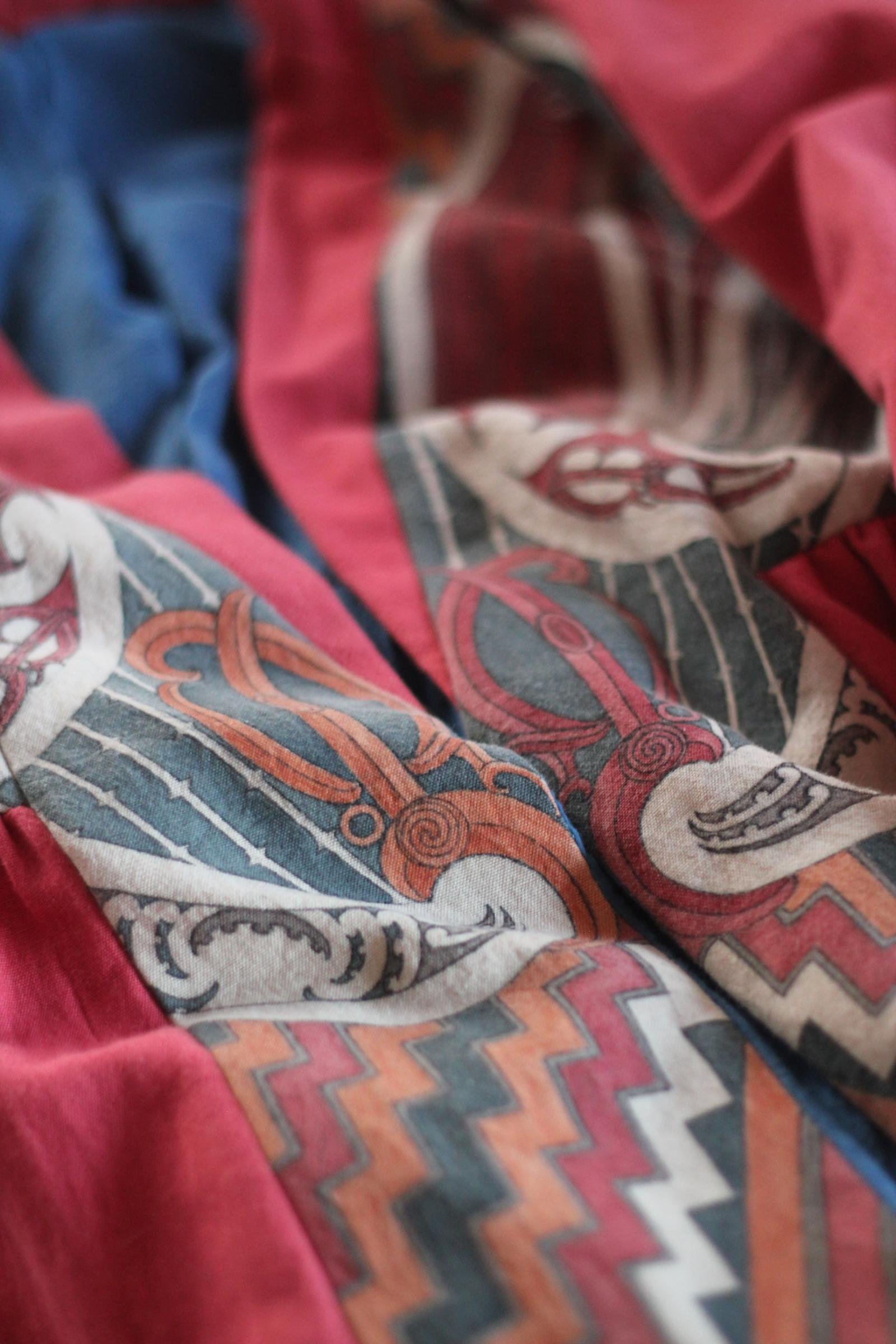Te Hā o Hineahuone
Nā Tara-Lee Manu - published June 2023
In the Summer months of 2022/23, Ngāmotu-based Ngāpuhi artist Tara-Lee Manu was commissioned by Kauae Raro to create a garment honouring Hineahuone. With a background in fashion design, and her hands at home in the soil through both tending to gardens and artmaking, Tara-Lee gives us an insight into her grounded, sustainable creative practice.
Te Hā o Hine-aho-one is conceptually grounded within the Whakatauki “Me aro koe ki te hā o Hine-ahu-one - pay heed to the dignity of māori women“ which has guided both ngā āhuatanga hoahoa, the design elements, of this hākete, jacket, as well as the methods and materials used.
Ka mua, ka muri. It was my intention to explore ways in which mātauranga māori could inform traditional textile practices within contemporary kākahu as a way to uplift or whaimana atua wāhine.
Hua Parakore, a māori framework for growing kai atua, pure food, has been mindfully considered throughout each phase of this mahi from the growing and harvesting of local botanical dye and whenua to the sourcing of textiles ensuring the six kaupapa of whakapapa, wairua, mana, māramatanga, mauri and te ao tūroa were upheld.
The rhythm of Maramataka Māori guided the entire process from project start date to mahinga kai: growing and gathering of rongoā for dyes/inks to type of mahi done within my studio.
Ngā Āhuatanga Hoahoa
The Design Elements
The painted bodice design explores the saying tīhei, mauri ora and seeks to express kōrero within a pūrakau told about Hine-ahu-one who was formed from the red earth at Kurawaka and brought to life by the hongi of Tāne.
Atua are acknowledged as maniaia for the contributions of their essences towards the formation of Hine-ahu-one and therefore te ira tangata. The poutama is acknowledgement to Tane’s pursuit of the uha, the feminine element.
Hine-tītama and Hine-nui-te-pō are both represented within the lower tāniko patterns reinforcing the whakapapa connection of mana wāhine to ngā atua.
Waitae
Dye
Two types of organic cotton are used to create Te Hā o Hine-ahu-one, the outer is hand-loomed and the lining is machine loomed.
The red dye used for the jacket is the dried roots of the Rubia tinctorum plant commonly know as Madder. Waitumu or mordant is required when attaching certain botanical colours to cellulose fibre, it acts as a link to bond the colour to the fabric and is a two step process.
Indigo does not require these extra steps.
The first step was tannin. A bath of Tānekaha, Mānuka, Makomako was made by soaking cuttings in wai māori and boiling to extract their tannin. The rākau material was then removed and textile submerged into the warm liquid.
Textile is then wrung out with excess liquid removed ready for step two. In order to coax out the red tones of madder root the water temperature must remain under 80°C. Ground dry root was added to a large pot of water, textile was then added and heat increased slowly for around 1.5hrs stiring consistently. The dying of blue was done in a cold indigo iron vat repurposed from a plastic 44 gallon drum.
Fabric was dipped four times for approximately three minutes in order to achieve this depth of colour. Fabric was rinsed in cold water then neutralised by boiling for an hour in a vinegar wai Māori solution.
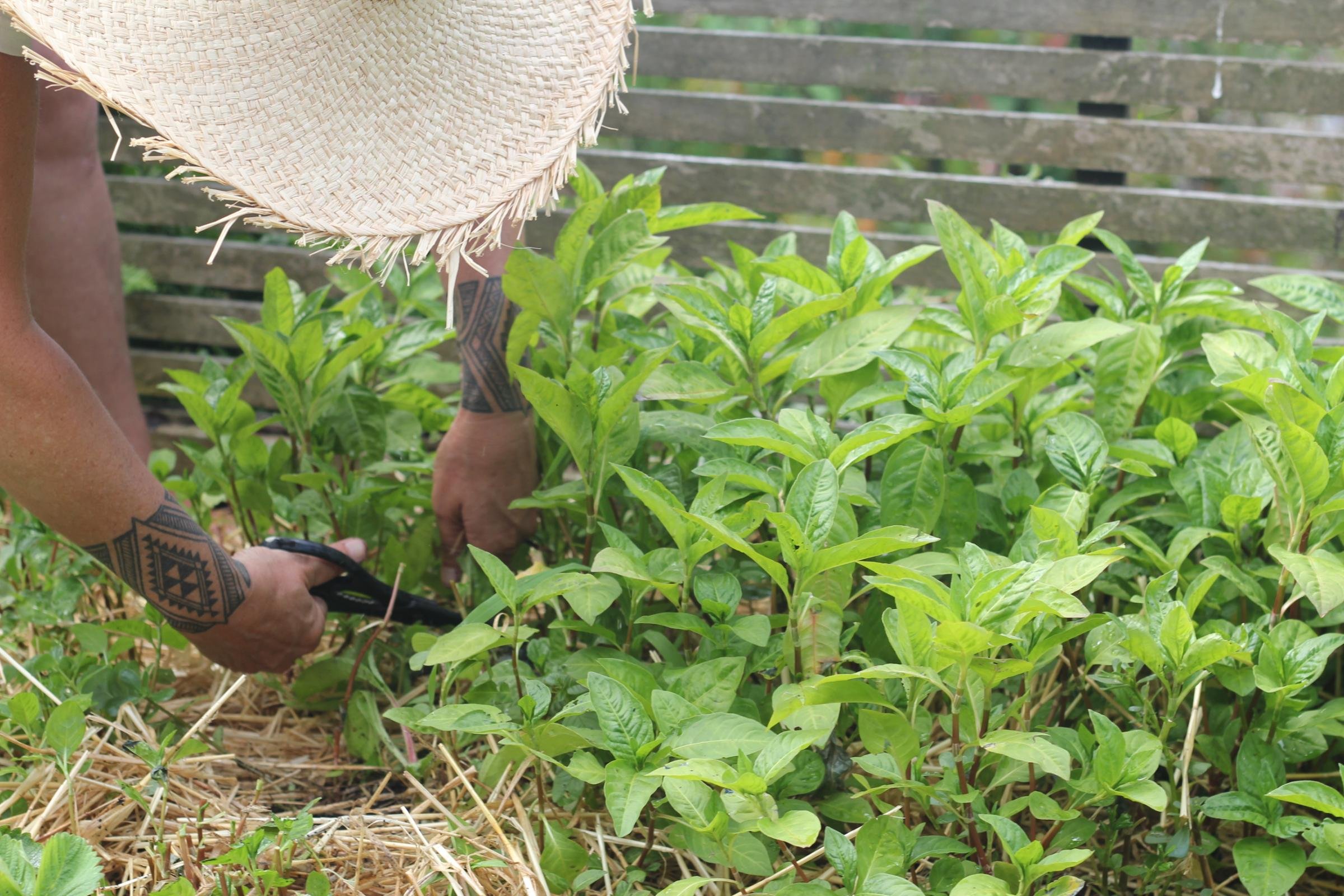



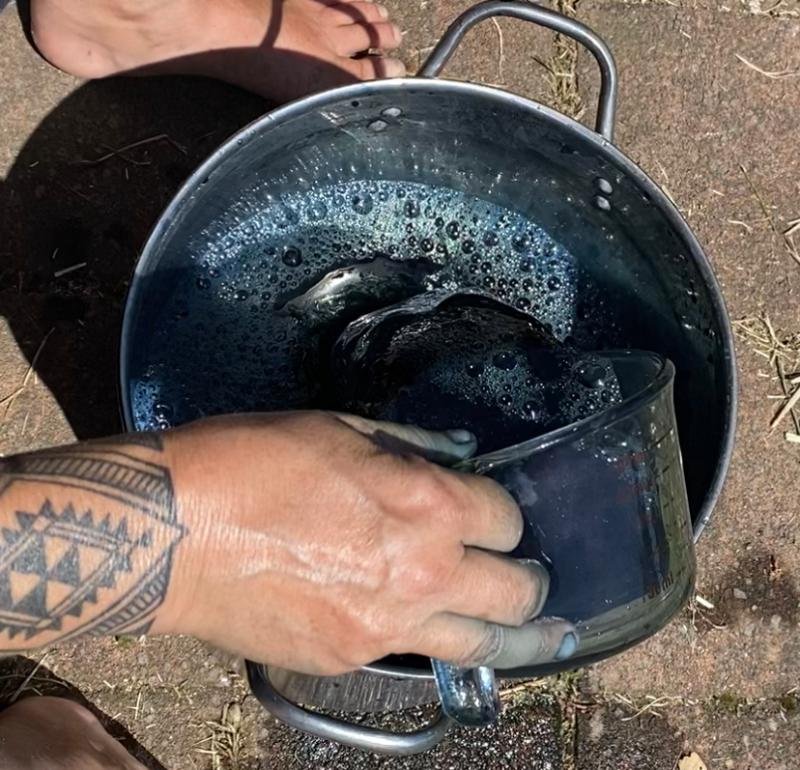

Waituhi
Ink
The pre-mordanted textile is soaked in raw organic cows milk and hung to drip dry, this creates a surface that will help alleviate any bleeding from the application of ink.
The outlines are marked permanently with ink made from the rākau Makomako. Dried branches were cut into small pieces and extracted with alcohol then the liquid was strained through a coffee filter. Iron was added to darken the colour then the liquid extract was thickened with gum arabic powder to a consistency suitable for use in a fountain pen.
The left over madder root dye bath was used to create a lake pigment by adding alum and calcium carbonate to the red liquid causing the pigment to sink. The pigment is then washed several times to remove any impurities. The pigment is then strained through a coffee filter and mulled with a gum arabic solution.
The indigo pigment was extracted by firstly fermenting freshly harvested leaves. Plant materials are strained out and composted, the green coloured liquid has calcium carbonate added to it then is aerated until froth and liquid turns blue in colour. Once blue colour is achieved it is left to allow pigment to settle to bottom of vessel. Excess water is strained off and pigment is left to dry. The dry pigment is then mulled with gum arabic solution into a ink consistency.
The kōkōwai was found washed up after a storm on the whenua of Ngāti Hei. A small piece was gathered, dried and crushed into a powder. The dried pigment was then mulled together with kauri gum and wai māori to ink consistency


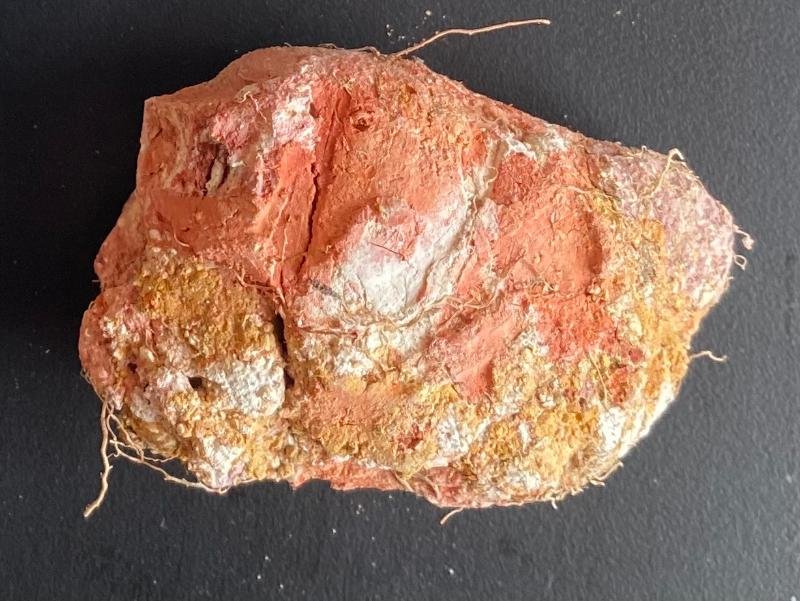


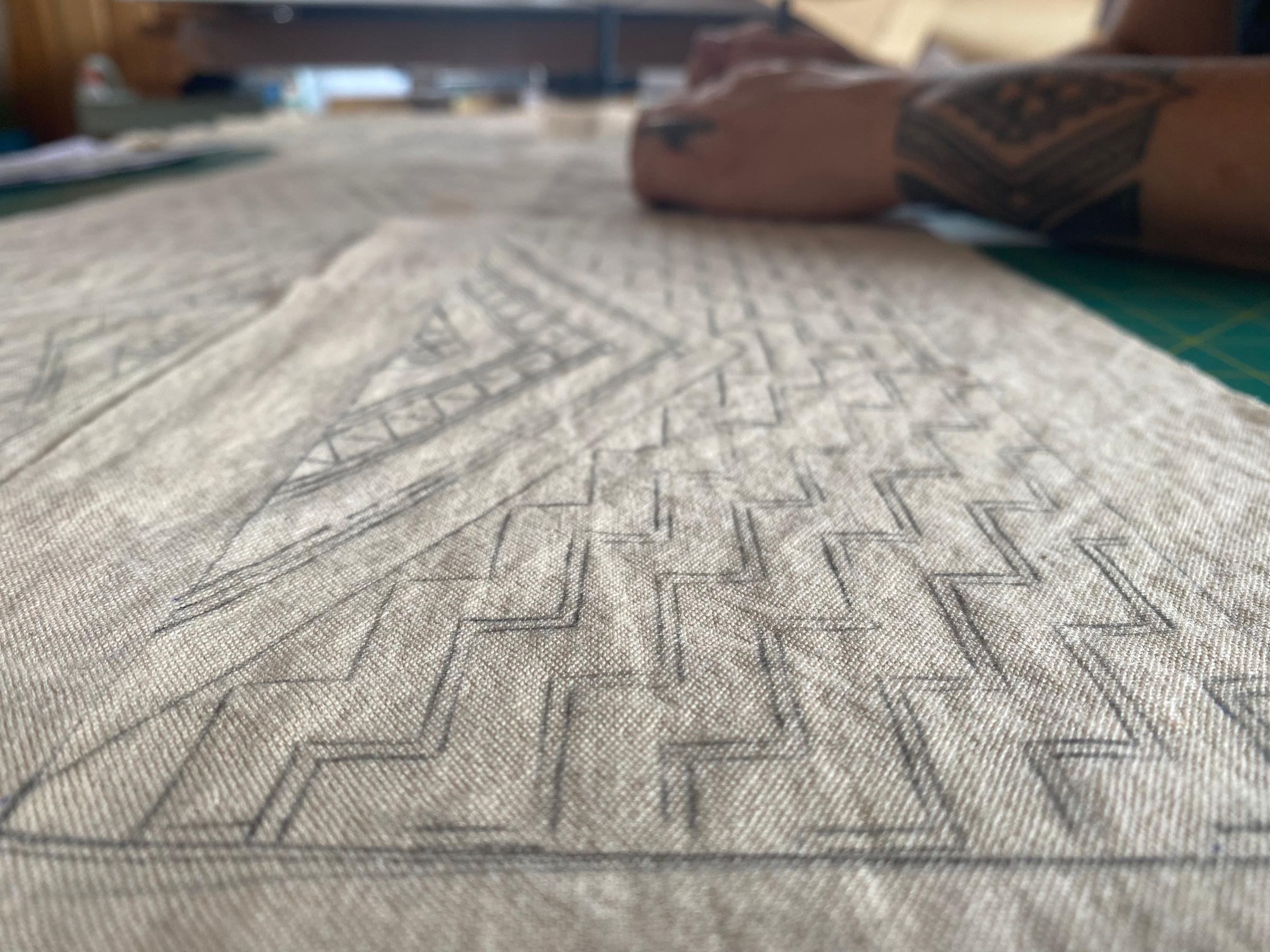
The final touch
The bringing together of the two front manaia, ko Hine-ahu-one rāua ko Tāne-māhuta in the position of te whare tangata reinforces their hongi and the mouri ora of te ira tangata.
The hākete is closed at centre front with a muka bound driftwood toggle.
Me aro koe ki te hā o Hineahuone -
Me aro koe ki te hā o Hineahuone -


